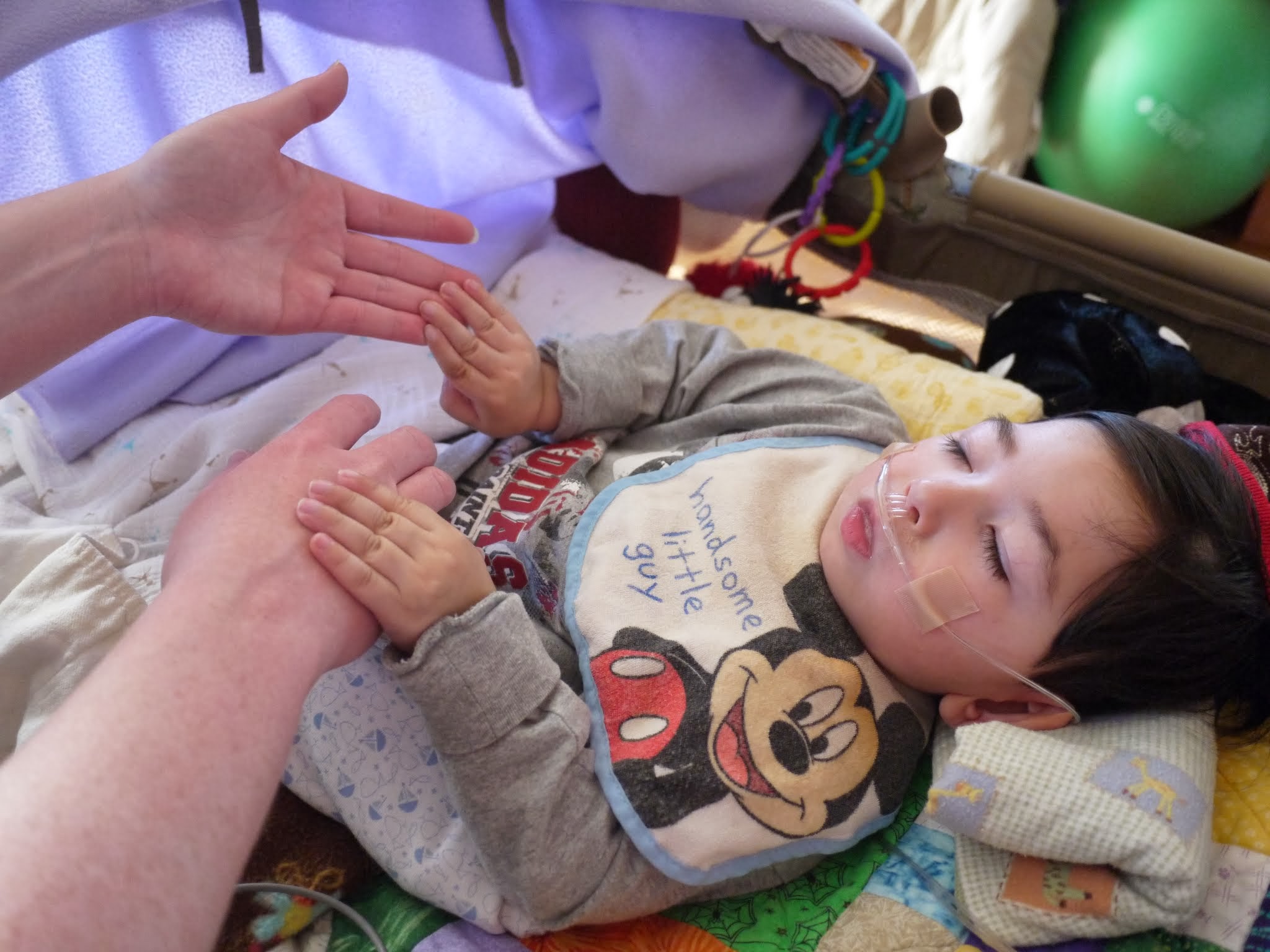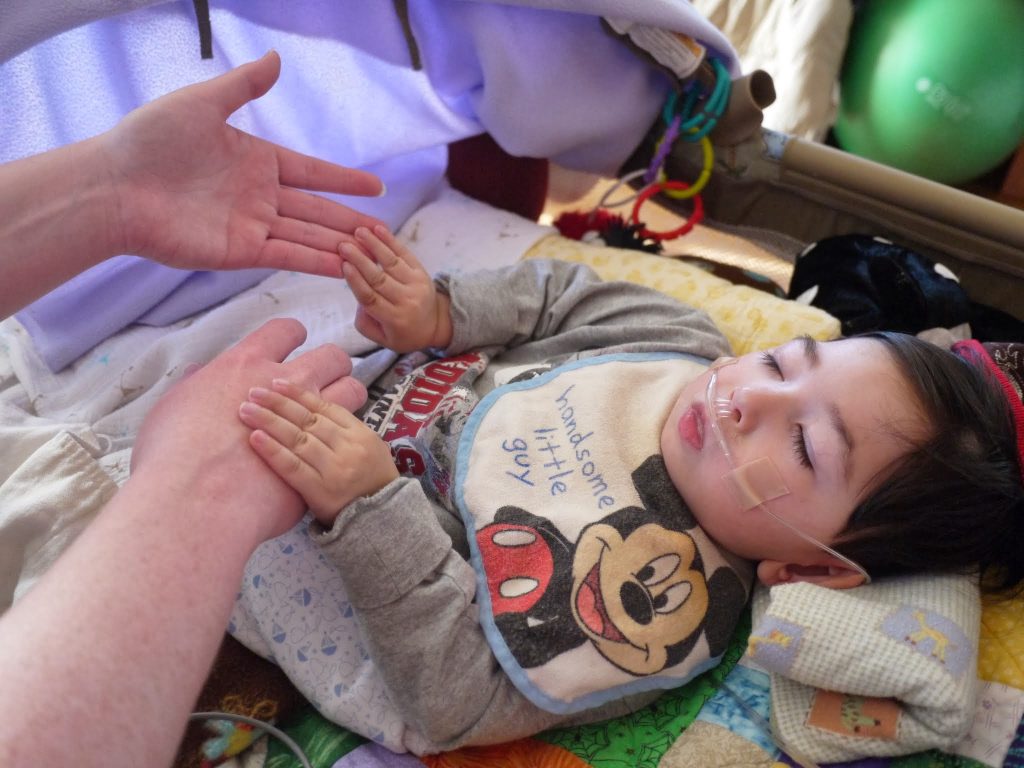6/6/2023
·Enable high contrast reading
Decreasing Caregiver Burnout through Remodel Time

 Before my husband and I were parents, we were entrepreneurs co-leading a start-up. Little did we know then, a key strategy we were using in growing our business would later serve as a lifeboat for us as family caregivers running an in-home ICU to care for our son’s medical complexities.
Before my husband and I were parents, we were entrepreneurs co-leading a start-up. Little did we know then, a key strategy we were using in growing our business would later serve as a lifeboat for us as family caregivers running an in-home ICU to care for our son’s medical complexities.
In vs On
It begins with differentiating between what it means to work in your business and what it means to work on your business. Working in your business refers to all of the jobs, tasks, and meetings required to deliver your product or service. Working on your business is about assessing and improving the systems, routines, mindsets, workflow rhythms and environments that allow you (or your staff) to work in your business.
Helicopter View
As business owners my husband and I engaged in a practice of setting aside time each month to step away from the office to work on our business. We would tackle a specific operational problem hindering the function and/or growth of our business. It felt like taking a helicopter ride, zooming out to look at the larger landscape, to assess how our business was functioning.
Together we identified one problem, what made it a problem and why change was a priority. Then we expressed our wishes for how it could be different, brainstormed possible solutions, and made a decision on how to approach this change. We called these meetings Remodel Time because the result was a remodel of how our business functioned. This improved efficiency and how work happened in our business.
Providing Care without a Systems Plan
When our son Levi was born with severe HIE, we were immediately immersed into a hospital-based NICU-life with all of its protocols and 24/7 rhythms. At two weeks of age we began the steep learning curve of how to care for our son in preparation for going home. It was a thrilling and terrifying moment to bring Levi home at three weeks old. Figuring out how to be a NICU staff of two was overwhelming.
Each day we faced the sustained uncertainty of if Levi would live to see the next day. Learning the what of caring for Levi was more essential than the logistics and systems of how we were doing it. Oxygen tanks landed by the front door because it was easy for the delivery person. Medications and medical supplies haphazardly found their place in the first available spot.
Even as days became weeks and months, the high uncertainty of tomorrow prevented us from comprehending the need for a systems plan. When Levi caught his first pneumonia we added more medical equipment, medications, and supplies. When he began in-home therapies and early intervention education we added adapted toys, chairs, mats and supplies. Layer by layer, we developed medical care plans, therapy plans, and education plans. These plans included detailed definitions of what it meant to work in the business of caring for Levi. None of these plans addressed the operational aspects of caring for Levi. For that we had no plan.
Remodel Time becomes our Lifeboat
Levi was nearly two years old before we recognized we were living without a systems plan. The relentless 24/7 intensity of caring for him absorbed our total focus. It wasn’t until we began to have night nursing staff (long after having daytime PCAs) that we had to more fully teach our system of care to someone who could care for Levi while we were away (aka asleep).
With great kindness our nurses asked questions and gave insights on different ways we could improve our systems.These seemingly small changes radically improved our daily experience as caregivers. We felt we could begin to breathe more deeply.
This sparked the memory of our Remodel Time business meetings and we began to experiment with how to apply it to caring for Levi. As before, we focused on one problem per meeting with a goal of identifying a specific actionable change we could make with the resources we had available to us.
Here are three tangible examples of changes that came from our monthly Remodel Time meetings.
- We addressed the traffic jam of clean and dirty dishes, syringes, and feeding pump bags all hovering around the kitchen sink. We moved the medical items to the nearby bathroom sink. This generated several improvements including reducing the traffic flow into the kitchen, making meal prep and clean up easier.
- We recognized the furniture in our living room (now Levi’s everything room) did not have adequate storage for his medical, therapeutic, and educational items. Caregivers were spending too much time searching for what they needed which left Levi waiting. We developed a wish list and reached out to a local furniture store that had a program for donating their floor samples to local nonprofits. The store connected us with a nonprofit and our wish list was delivered two months later. Both Levi and his caregivers benefited from this change.
- Levi’s deafblindness impacted how he experienced the world and communicated with others. As he grew his need for his caregivers to understand this grew. Picking him up for a hug could be wonderful or anxiety-producing, depending on how this was communicated to him ahead of time. Increased anxiety easily cascaded into other emotional and physical challenges for Levi. We planned a training for all caregivers to learn about deafblindness and specific strategies for communicating with Levi. This radically improved relationships all around and opened the door for caregivers to share their discoveries as Levi grew.
 With each remodel change we made, even the seemingly smallest ones, we felt our burnout decrease and our resiliency grow. We witnessed this also happening within the whole care team. We could breathe deeper and think more clearly. This improved our collective quality of care for Levi and our ability to foresee the next opportunity for change.
With each remodel change we made, even the seemingly smallest ones, we felt our burnout decrease and our resiliency grow. We witnessed this also happening within the whole care team. We could breathe deeper and think more clearly. This improved our collective quality of care for Levi and our ability to foresee the next opportunity for change.
Surprisingly, in my marriage Remodel Time also served to tend to some of the grief that comes from having your life broken into “before Levi” and “with Levi” experiences. By bringing the Remodel Time practice into our “with Levi” life, we learned our “before” life wasn’t a waste or an alter-reality we would never return to. Rather, it set the stage for us to love and care for Levi to the best of our abilities right now.
In so many ways Remodel Time became an essential lifeboat in our experience as family caregivers. The relentlessness of running an in-home ICU didn’t change but our ability to live and thrive within it did.
Levi’s mom, Dannell Shu, has served as a parent advocate within pediatric palliative and hospice care since 2014. As a writer, speaker, educator, and thought leader she brings forth insights gained from lived-experience and the stories of children in need of palliative care. She serves as a Family Caregiver on the Pediatric Palliative Care National Task Force. To learn more about her advocacy visit MamaShu.org. To learn about the resources she creates for bereaved families visit RedBirdTime.com





